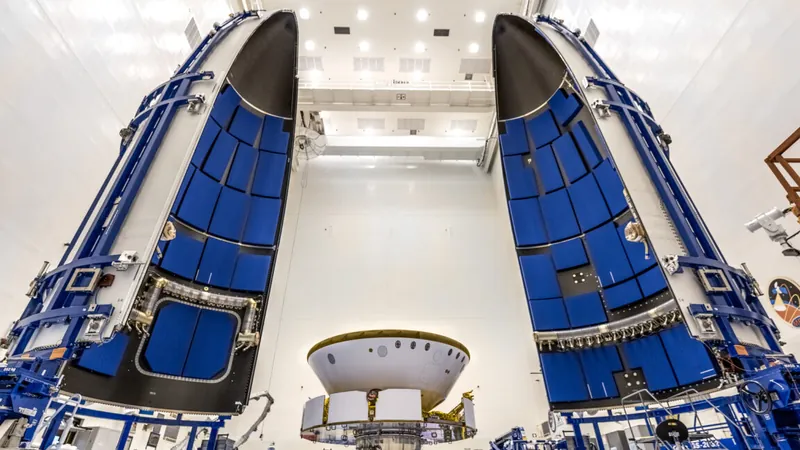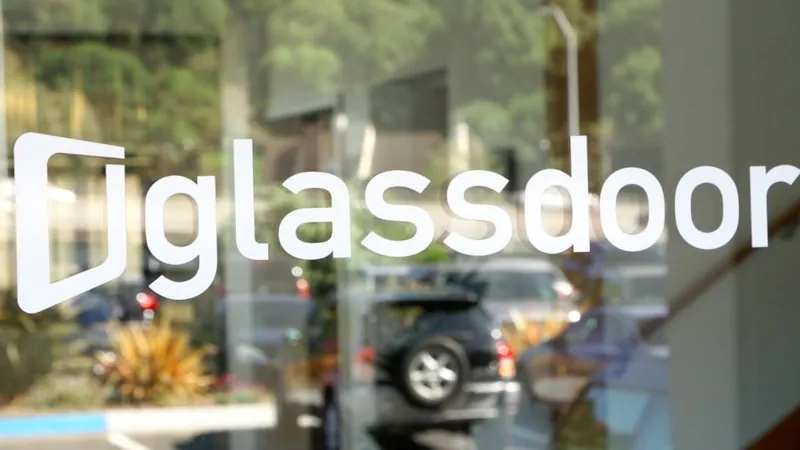
ULA Faces Dual Challenges: Investigating Vulcan Booster Anomaly and Fairing Issues Amid Growing Concerns
2024-10-30
Author: Ting
In an intriguing turn of events, United Launch Alliance (ULA) finds itself navigating through not one, but two significant challenges concerning its launch operations. As the spotlight shines on a recent anomaly with its new Vulcan rocket, the company is also faced with potential payload fairing complications, sparking concerns about the implications for national security missions.
A little over a year ago, during the Atlas V rocket's launch carrying three classified surveillance satellites for the US Space Force and the National Reconnaissance Office (NRO), something unexpected happened. A video clip, which was not meant for public release, displayed the moment the payload fairing separated from the rocket. This sequence is typically shrouded in secrecy; the government restricts broadcast of ascent phases involving sensitive payloads to protect operational details from potential adversaries.
On September 10, 2023, however, viewers witnessed pieces of material—possibly insulation—falling away from the fairing as the Atlas V rocket soared from Cape Canaveral, Florida. This public glimpse of the heavy-duty shell's performance raised immediate alarms, as debris from the fairing poses potential risks to the very satellites the shroud is designed to protect. Thankfully, the Space Force and NRO have not reported any damage to the Silent Barker satellites in orbit, a program crafted to monitor threats to military and intelligence assets in a strategic geosynchronous position more than 22,000 miles above the Earth.
Despite this ongoing investigation into the fairing issues, ULA, alongside the Space Force, claims that all relevant Atlas V missions were executed successfully. Their investigation, however, continues, raising questions about potential vulnerabilities in ULA's technology. Meanwhile, ULA is gearing up to make history as it prepares for the inaugural operational flight of its Vulcan rocket.
On October 4, a test flight of the Vulcan rocket revealed another layer of complexity when a nozzle detached from one of its strap-on solid-fueled boosters shortly after launch. Despite this complication, the main engines effortlessly compensated for the asymmetric thrust, allowing the rocket to proceed into orbit successfully. ULA officials and Space Force representatives hailed this performance as evidence of Vulcan's reliability, creating optimism that no additional test flight will be necessary before its first national security launch, anticipated by year-end.
It's worth noting that the Vulcan rocket features payload fairings produced by Beyond Gravity—similar to those used in the Atlas V. With this connection, concerns linger about fairing integrity, particularly under the critical eye of the Space Force, which may opt to move forward with the Vulcan certification process even amidst ongoing investigations into design and production similarities.
In the face of these technical trials, engineers from ULA are meticulously analyzing data from both the fairing and the Vulcan booster anomalies. ULA assures its stakeholders that precautionary measures and corrective actions are being integrated ahead of future launches. With high-profile missions skyward, all eyes are on ULA as it attempts to maintain its position as a premier launch provider under the ever-watchful gaze of national security interests.
Stay tuned as we keep you updated on this developing story which not only affects ULA but also the contours of space security and technological prowess in the face of global rivalries. Will ULA successfully clear these hurdles before its critical Vulcan launch? The answer may redefine the landscape for future space missions.






 Brasil (PT)
Brasil (PT)
 Canada (EN)
Canada (EN)
 Chile (ES)
Chile (ES)
 Česko (CS)
Česko (CS)
 대한민국 (KO)
대한민국 (KO)
 España (ES)
España (ES)
 France (FR)
France (FR)
 Hong Kong (EN)
Hong Kong (EN)
 Italia (IT)
Italia (IT)
 日本 (JA)
日本 (JA)
 Magyarország (HU)
Magyarország (HU)
 Norge (NO)
Norge (NO)
 Polska (PL)
Polska (PL)
 Schweiz (DE)
Schweiz (DE)
 Singapore (EN)
Singapore (EN)
 Sverige (SV)
Sverige (SV)
 Suomi (FI)
Suomi (FI)
 Türkiye (TR)
Türkiye (TR)
 الإمارات العربية المتحدة (AR)
الإمارات العربية المتحدة (AR)